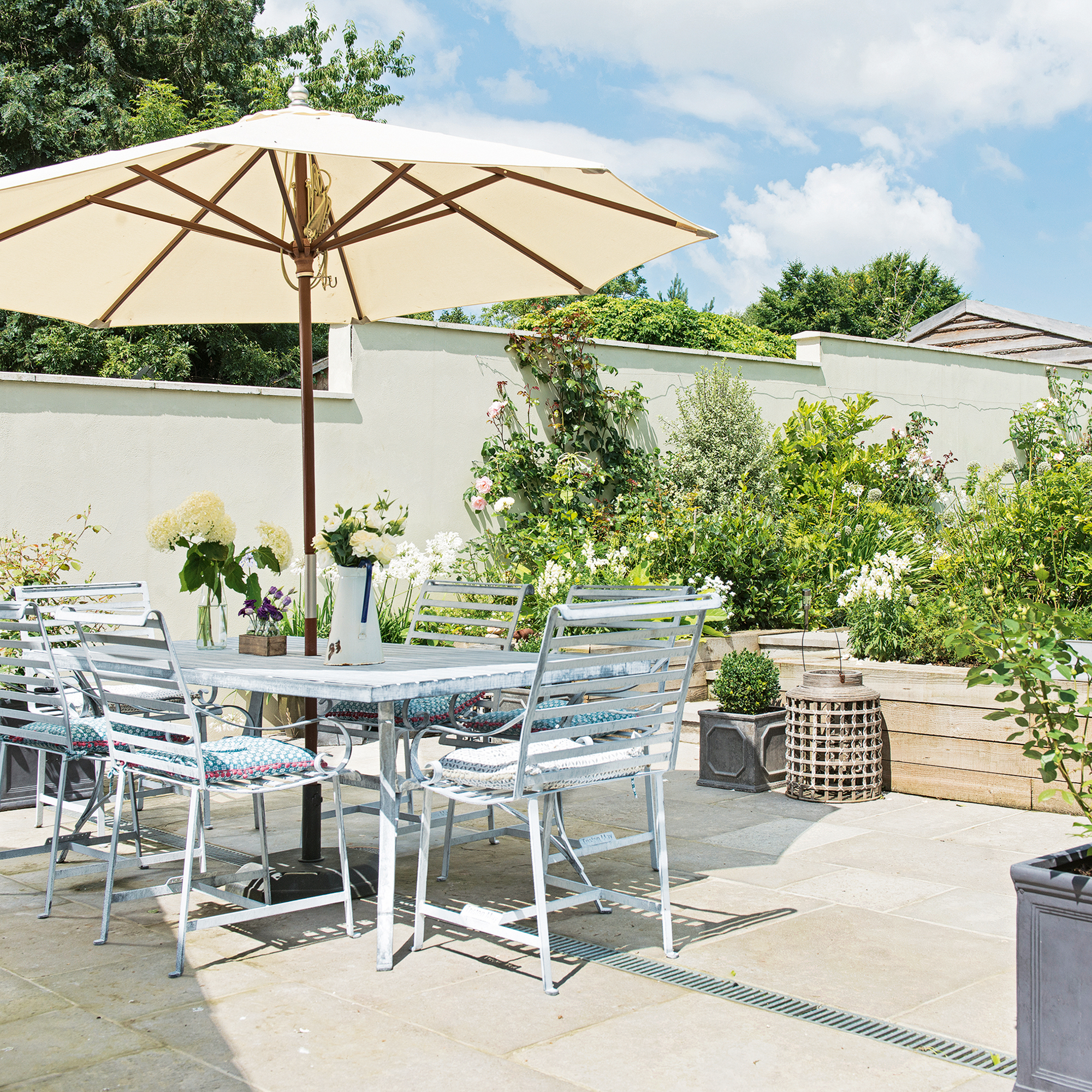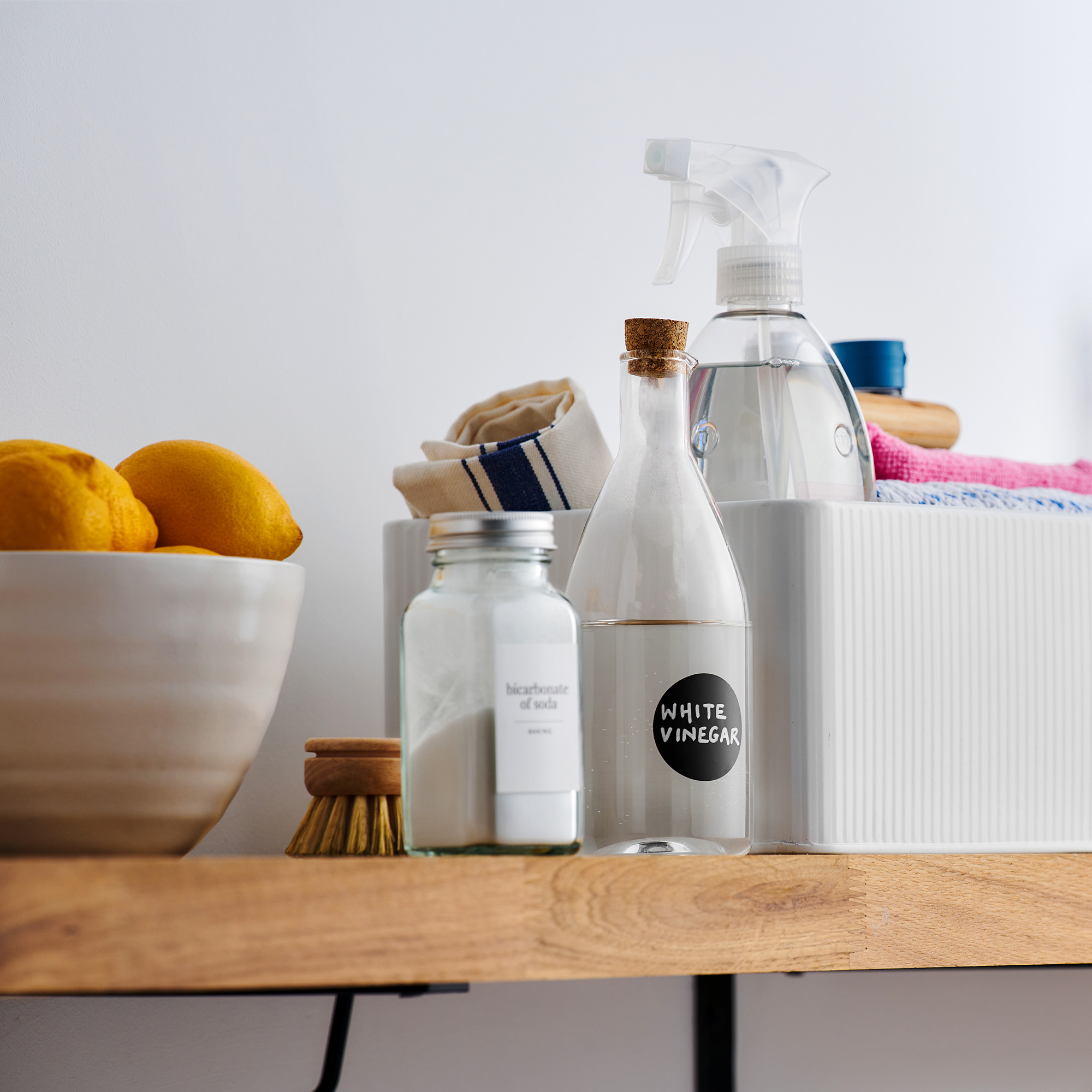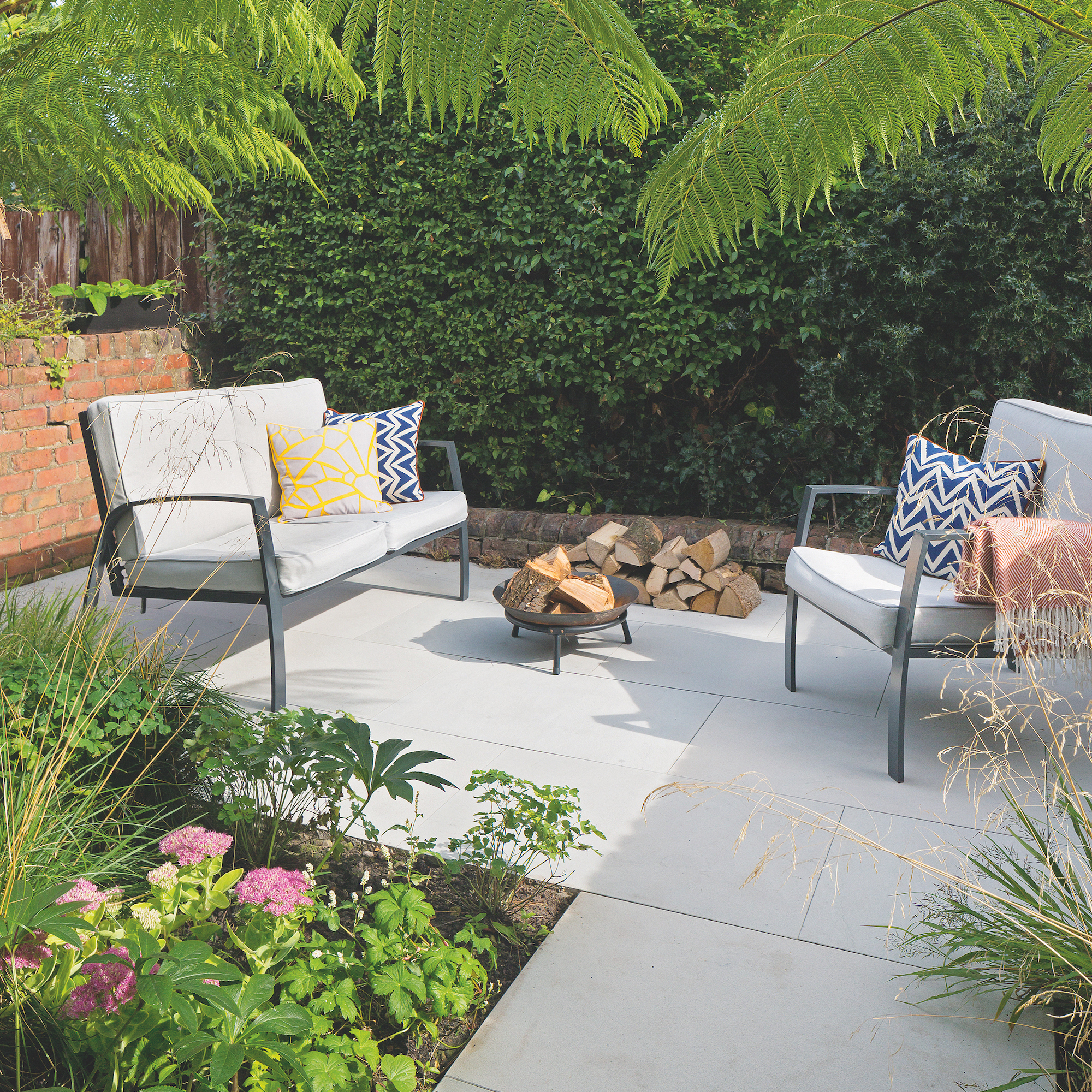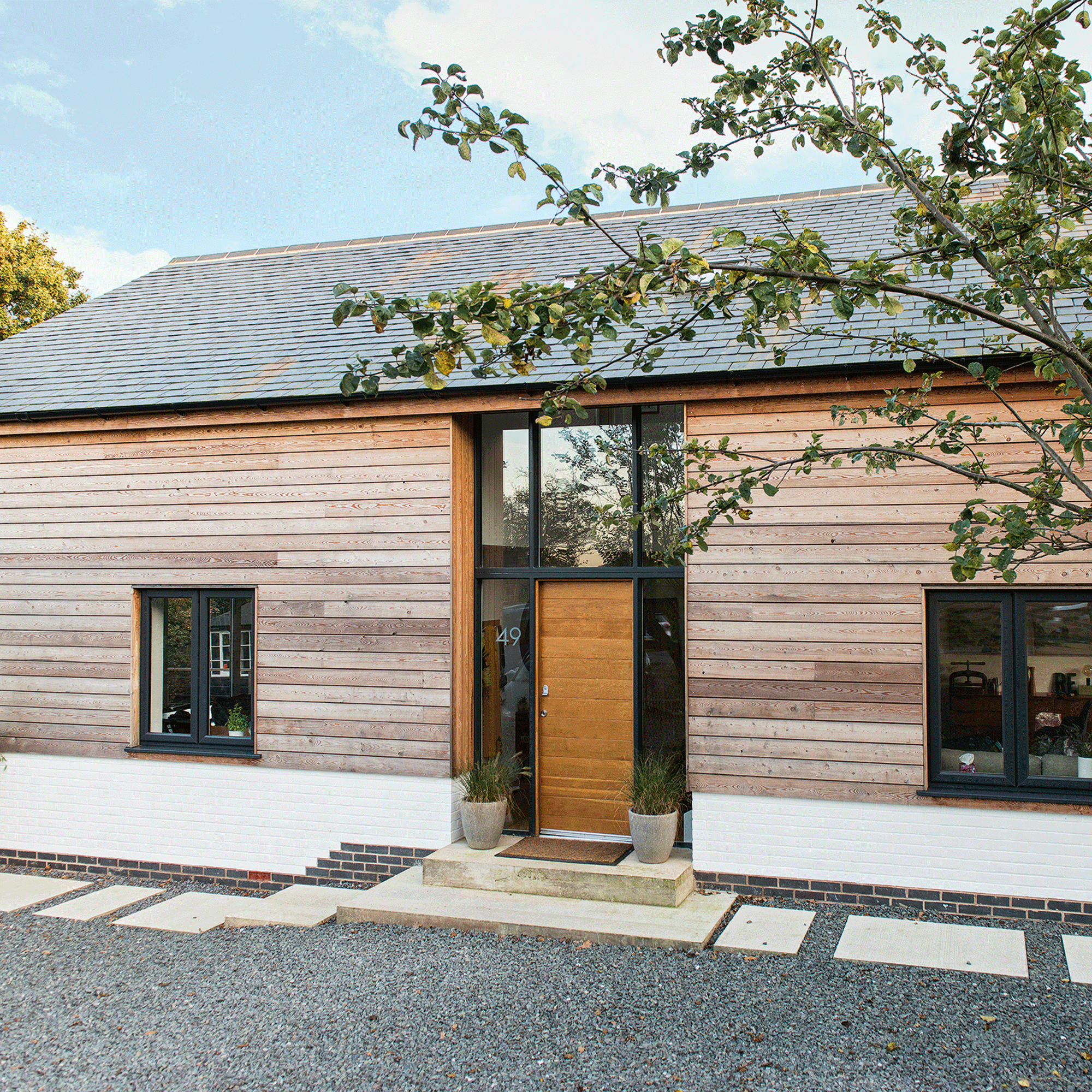How to clean paving slabs — a foolproof 5-step process to clean winter grime off your driveway, patio, or garden paths
Spruce up your outdoor space in 5 easy steps


If you’re wondering how to clean paving slabs, there’s a high chance that your outside space is looking a little worse for wear. But you're not alone, as these areas are constantly bombarded by wet weather, leaves, stains, algae, bird droppings, and so much more.
But whether you want to know how to clean a patio or you’re looking to refresh your garden path, you’ll be happy to know that it’s very easy to clean paving slabs. And while it’s a small task to tick off your to-do list, it can have a huge impact on your garden ideas and ultimately breathe new life into your outside space.
So, I’ve put together the ultimate guide on how to clean paving slabs to ensure you get the job done quickly, efficiently, and without damaging them in the process. Follow this, and your outdoor space will look as good as new.
What you'll need
- A broom - like this Charles Bentley 2 in 1 Outdoor Broom from Argos
- Patio weeding tool - like this Newman and Cole Weed Brush from Amazon
- Hard bristle brush - like this Bassine Scrubbing Brush from B&Q
- White vinegar - like this Miniml White Vinegar from Lakeland
- Sealant - like this Sika Patio Seal Paving from Amazon
- Pressure washer - like this Karcher K4 Power Control Home Pressure Washer from Amazon
Step-by-step
1. Prepare for cleaning
Most people underestimate the power of prep work, especially when it comes to cleaning paving slabs. But taking just five minutes to move the car, temporarily remove plant pots, and get rid of weeds can make a huge difference to the finished result.
This is echoed by Tom Clifford, garden landscaping expert from Gardenstone, who says, ‘When you’re cleaning paving slabs, it is always best to remove any surrounding weeds to keep them looking as clean and tidy as possible.’

Then, it’s time to grab a broom or a dustpan and brush, like this Dust Pan and Brush Set from Dunelm, to get rid of bigger dirt and debris on the surface of your paving slabs. Not only is this part of the cleaning process, but it’ll also make the remaining steps easier.
‘The first step in removing the build-up of debris is to sweep or brush away loose dirt and leaves from the area,’ says Nick Ee, product and training manager at BLACK+DECKER. ‘This will make the cleaning process more effective as any stains often lie underneath this buildup.’
2. Clean with the right products
While the best patio cleaners can certainly help you out if you’re looking to clean the paving slabs of your patio or stepping stones, there are so many other options out there. In fact, you can clean patio stains with Bar Keeper’s Friend, and your driveway is one of the many things you can clean with white vinegar.
However, Andy McLaughlin, Paving & Landscaping expert at RF Paving warns that you need to choose the right cleaning solution for your particular paving slabs. ‘There are products and chemicals that should be avoided completely when cleaning paving – it is just knowing which substance can be used on which paving, along with knowing what type of marks need to be cleaned off the surface,’ he says.

Because of this, we’d always suggest researching the stone of your paving slabs before using any cleaner, or opting for an all-natural cleaner like the Monty Miracle Fast Patio Cleaner from Amazon, which is child and pet safe after rinsing. And in most cases, these cleaners can be left to work their magic for a few minutes before scrubbing and rinsing.
Alternatively, you could use gentle household cleaners like washing-up liquid to get the job done. Tom says, ‘Pour a small amount of warm, soapy water on one of your paving slabs and use a hard-bristle brush to scrub. Start at the corner of the slab and move inwards.’
3. Tackle tougher stains
Over time, it’s common for paving slabs to suffer as a result of dirt and algae build-up, and you may find that you’re struggling to get rid of black spots on a patio or driveway, even after you’ve followed the steps above. In this case, you’ll need to tackle these tougher stains, and there are a few different options for this.
Although you can use specific mould or algae removers, we’d always suggest opting for a more natural approach. So, we’d recommend making a paste of bicarbonate of soda (like this Amazing Baking Soda Multi Purpose Household Cleaner from Amazon) and water, or using white vinegar.

‘White vinegar is effective in breaking down dirt and stains due to its acidic qualities,’ explains Tom. ‘Create a mixture of one part vinegar and one part water, pour the mixture onto a section of your paving slab and leave it to sit for 5 to 10 minutes. Next, take a hard bristle brush and scrub the area until the dirt or stains are lifted. Again, it is important to use a test slab with this method in case of damage.’
And when you’ve done that, you can grab the garden hose and rinse your paving slabs once again. Just make sure that all of the vinegar has been removed before letting them dry, as this could result in further staining.
5. Pressure wash as a last resort
Although you can clean a patio without using a pressure washer, there’s no denying that the best pressure washers can make this job even easier. But can the same be said for paving slabs? Well, most experts would advise using a pressure washer as a last resort when cleaning paving slabs.
Nick suggests, ‘I would recommend testing the pressure washer settings on a small area to ensure you’ve selected the right setting for the job and to avoid causing damage.’ And if you spot any causes for concern, stop using it immediately.

You also need to use the correct technique if you want to use a pressure washer, as you want to avoid damage at all costs. Andy says, ‘If using a high-pressure washer to regularly clean the paved area be wary of the joints, as these are potential weak points, also the angle and distance from the paving that the nozzle of the gun is pointed at the paving.’
He adds, ‘The recommendation is a minimum of 300mm distance from the paving at a 45-degree angle, with extra caution being taken when spraying near joints.’
5. Finish by sealing
Cleaning paving slabs can cause damage to your patio, driveway, or pathway, even when you clean them gently. So, in some cases, you may need to finish by refreshing the joints with new jointing compound - like this Sika FastFix Ready Mixed Quick Dry Jointing Compound from B&Q.
Then, it’s always worth finishing the job by sealing the paving slabs. This is echoed by Martin Beaumont from Monty Miracle, who says, ‘Once the area is dry, use a sealant to protect your surfaces. A quality liquid sealant will repel dirt and contaminants, which is important on paving slabs in high traffic areas - keeping your path, drive or patio stain resistant, safe and smart for years to come.’

In fact, this is an essential step when preparing your patio for winter, but it’s also something that you should do throughout the year to keep your paving slabs in tip-top condition at all times. Thankfully, this shouldn’t affect the look of your paving slabs in any way, but you can opt for either matt or wet-look sealant if you’re looking to switch things up.
Then, once you’ve completed all of the steps above, you can sit back, relax, and enjoy the fact that you’ve just cleaned your paving slabs. Just make sure you repeat this process several times a year.
FAQs
What is the best thing to clean patio slabs with?
Warm water and washing-up liquid are often enough to cut through the dirt and grime of patio slabs, as long as you clean them with a hard-bristled brush that will be able to disturb it enough.
However, if you find that this mixture isn’t strong enough, you can also create a 1:1 solution of water and white vinegar. You can use this in the same way, and the acidity of the vinegar should be strong enough to break down even the toughest of stains.
How do you clean paving slabs without a pressure washer?
Ideally, you should avoid cleaning paving slabs with a pressure washer. The strength and the power of this garden gadget can be too much for your slabs and damage them in the process. So, clean them by hand instead.
Create a solution of warm water and washing-up liquid, and scrub them with a bristled brush. You should then rinse them clean and repeat as necessary.
Can you clean paving slabs with washing-up liquid?
Yes! Using washing-up liquid and water is the best way to clean paving slabs, and it’s extremely efficient in removing moss, algae, and dirt stains.
If you do need a little extra oompf, use water and white vinegar instead.
Now you know how to clean paving slabs, it’s time to get your hands dirty!
Get the Ideal Home Newsletter
Sign up to our newsletter for style and decor inspiration, house makeovers, project advice and more.

Lauren Bradbury has been the Content Editor for the House Manual section since January 2025 but worked with the team as a freelancer for a year and a half before that. She graduated with a Bachelor’s degree in English and Creative Writing from the University of Chichester in 2016. Then, she dipped her toe into the world of content writing, primarily focusing on home content. After years of agency work, she decided to take the plunge and become a full-time freelancer for online publications, including Real Homes and Ideal Home, before taking on this permanent role. Now, she spends her days searching for the best decluttering and cleaning hacks and creating handy how-to guides for homeowners and renters alike, as well as testing vacuums as part of her role as the Ideal Home Certified Expert in Training on Vacuums, having spent over 110 hours testing different vacuum models to date!
You must confirm your public display name before commenting
Please logout and then login again, you will then be prompted to enter your display name.
-
 Wood drenching is the calming new twist on the colour drenching trend – here’s how to make the look work in your home
Wood drenching is the calming new twist on the colour drenching trend – here’s how to make the look work in your homeIt’s easier than ever to embrace natural materials
By Maddie Balcombe
-
 Aldi is launching a £200 day bed with four different features - its sleek design is suited to the whole family
Aldi is launching a £200 day bed with four different features - its sleek design is suited to the whole familyYou don't want to miss out on this Specialbuy
By Kezia Reynolds
-
 How to set up a drip watering system that saves water and a lot of effort
How to set up a drip watering system that saves water and a lot of effortKeep your plants hydrated (and your water bill down) with this clever garden watering solution
By Natalie Osborn